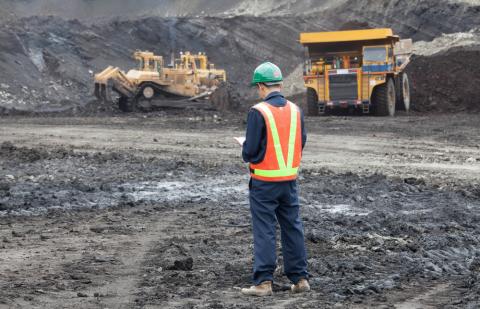In its new “Medium Term Coal Outlook Report,” published today, the International Energy Agency says quite a lot—but it doesn’t say it very clearly.
The report is written by the thermal power unit of the IEA with input from Wood Mackenzie, which gets lots of business from the coal industry, and from the Coal Industry Advisory Board (Peabody Energy, the Minerals Council of Australia, Glencore et al). As such it presents a more positive picture for coal than the IEA’s recent broader energy market outlook does. The latter, published in November, is a more substantial and less rosy evaluation of the growing pressures on coal from energy efficiency, renewables and policy changes.
This difference is in the treatment of several passages in the new report, including this one: “In 2015, global coal consumption declined for the first time this century.” A too-tiny footnote to that line concedes that coal consumption actually peaked in 2013 and then declined in 2014 and again in 2015, and is likely to decline again in 2016.
Indeed, today’s report includes some sleight of hand in how the IEA’s coal unit presents data in “millions of tonnes of coal equivalent,” a clever way to skirt the pure-volume truth.
To us here at IEEFA, the obvious if somewhat shrouded takeaway from the report is that the agency has consistently downgraded its forecasts for coal each year since 2011. Once you get past the murky presentation, IEA data points to a 16 percent reduction over the past two years in its global coal consumption forecast for 2019. This represents a huge amount of coal, equivalent to 12 times the total hard coal and lignite consumption of Australia, the fifth-largest coal-consuming member of the 35-nation Organization for Economic Cooperation and Development.
Further into the weeds a bit:
- As per the agency’s broader, November outlook, this new report does acknowledge that China coal consumption peaked in 2013. It has China’s thermal coal falling 104Mt or by 3.4% year over year in 2015, a profound change from the 10% compound annual growth rate (CAGR) increase seen in the decade to peak in 2013. The IEA has China continuing a marginal decline in 2016 and 2017 but then forecasts a return to marginal growth in the following four years.
- For India, the IEA medium-term forecast assumes consumption will grow by 4.9% CAGR to 2021, with Indian production growing at a faster rate of 5.8% CAGR, such that imports into India grow by a more subdued 2.4% CAGR to 2021. While the IEA acknowledges that Indian thermal coal imports declined in 2015 and are on track to do so again in 2016, it assumes a positive import trend from 2017-2021 on the presumption that India’s electricity transformation will not occur as fast as planned. The IEA acknowledges, however, that the risk is clearly to the downside.
- Seaborne thermal coal peaked in 2013 at 820Mtce, declining marginally in 2014 with the decline accelerating in 2015 to 5.8% or a 54Mt drop year on year to 883Mt, led by declines in China (down 76Mt), India (down 8Mt) and Europe ( down 2Mt).
- The seaborne market, by the IEA’s light, will probably decline in 2016 and 2017 before a marginal 1% per annum recovery through to 2021, although this outlook carries a caveat that it depends on India.
BEYOND THE UNMISTAKABLE CONSUMPTION AND SHIPPING TRENDS, THE OTHER INTERESTING CHALLENGE FOR THE COAL INDUSTRY is that the technology and deployment of “carbon capture and storage” is failing to advance at anywhere near the rate the IEA previously forecast.
“The momentum in CCS project deployment will likely stall by 2020,” this new report states, its authors pointing out that there have been no new developments since 2014 and that two major CCS projects in the U.K. have been cancelled. The future for CCS is dire, the agency allows, absent a strong carbon emissions pricing signal that might someday make such projects more viable than they are now.
The IEA medium-term update also acknowledges that coal-fired power plant financing represented just 4 percent of total global energy sector investments in 2015, as the majority of electricity-sector investment is now going to energy efficiency and renewable energy investments.
Further, international capital flows required for emerging market import-coal-fired power plant proposals such as the much-publicized Rampal project in Bangladesh are at risk.
“It is yet to be seen whether financing for these projects will be secured,” states the IEA, to its credit.
Tim Buckley is IEEFA’s director of energy finance studies, Australasia.
RELATED POSTS:
IEEFA Australia: In India’s Trend Toward Renewables, Winds of Coal-Market Change
IEEFA India: Electricity-Sector Transition Picks Up Speed












